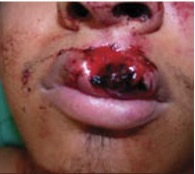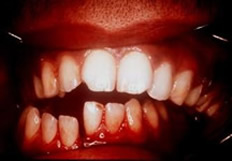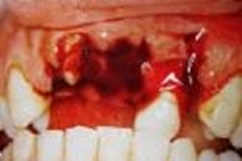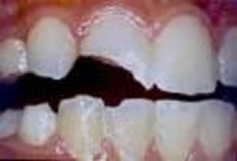Introduction
Oral and maxillofacial injuries refer to injuries to the region of the mouth, face or the jaw. This includes injuries to any part of the bony or fleshy structures of these regions. Teeth may be knocked out, broken or loosened. The lip, cheek, tongue or the nose may be torn or scratched. The facial bones, the palate, the eye sockets and the lower jaw may be broken or dislocated. A complicated injury to the oral and maxillofacial region may affect the ability to breathe, speak or eat. These injuries can be caused by physical force, foreign objects or burns. Oral and maxillofacial injuries as a result of road traffic accidents are still high (79.6%)1. Most injuries occurred in the age group of 20-29 years ( 34.5% ) and men are commonly the majority affected ( ratio 6 male : 1 female )1. The Majority of road transport accidents involved motorcyclists ( 57.95% ), car drivers ( 8.70% ), car passengers ( 7.36% ), bicyclists ( 2.04% ) and pedestrians ( 1.72% )1. The mandible ( lower jaw ) is the most common to be fractured ( 51.2% ), the cheek bones ( 23.6% ) and the maxilla ( midface ) 19.8%1.
Causes
There are multiple causes of oral and maxillofacial injury. These are road traffic accident ( 79.6% ), assault ( 7.62% ), falls ( 6.50% ), occupational injury ( 2.15% ) and sports-related injury ( 0.97% )1.
Signs and symptoms
These include:-
- Pain in the jaw
- soft tissue laceration on the skin or in the mouth ( cut )
- swelling
- bleeding
- visible and palpable deformity of bone
- abnormal mobility of the bone
- inability to bite
- tenderness on palpation
- broken or painful teeth
- disturbance of the sensation over the injured areas
- limited mouth opening
- eye injury including double vision and decrease mobility of the eye
- difficulty in breathing
Complications
A number of complications may occur if the injuries are not treated. These are:-
- risk to the airway
- bleeding
- infection
- facial deformity
- unable to bite, chew or swallow properly
- problem with the jaw joints
- permanent disturbance of the sensation over the injured areas
- permanent disturbance of the eye function
Treatment
Treatment depends on the type and extent of the injury. Treatment often requires hospitalization.
Soft tissue cuts.
- The wound is cleaned thoroughly with salt water to prevent infection. Large cuts may require sutures ( stitching ). Antibiotic and painkiller will be given to help with the healing process.


Soft Tissue Injury.
Jaw dislocation.
- Dislocation of the jaw can be treated by moving it back into alignment. Subsequently, the patient must avoid opening the jaw wide as he will be prone to repeat dislocations
Jaw and facial bones fractures.
- A bone fracture may be minor enough to heal with simple limitation of movement.
- A more serious fracture require complicated, multi-step treatment. The bone must be surgically immobilized, properly aligned and secured with metals pin and wires. Proper alignment is necessary to ensure that the bite is correct. If the bite is not correct, the patient will not be able to chew food efficiently and may have pain in the joint.
- For the fracture of the eye socket, surgical reconstruction may be required if the fracture changes the position of the eye.


Bone Injury
Tooth injury.
- A proper evaluation is important for treatment planning and prevention of infection. Implantation of an avulsed tooth is sometimes possible if it has been handled carefully and re implanted within 1 hour . The tooth should be held by the crown, not the root, and kept in milk, saline or contact lens fluid.The best place is to carry the tooth in the mouth.
- A broken tooth may need to be filled, extracted or root canal treatment rendered depending on its condition.


Tooth Injury
Burns
- For a mild burn, put a cold-water compress on the area or run cold water on it. Put a clean bandage on it for protection.
- For severe burn, patient must be taken to the hospital for treatment.
Prevention
- By increasing public awareness on road traffic safety and maxillofacial injuries in particular.
- By advocating the use of automobile seatbelts, automobile airbags, approved child safety seat and proper helmets for riding motorcycles or bicycles
- By using protective mouth guards, appropriate masks and goggles
Rehabilitation
- Facial scar revision can be done to improve facial scars.
- Dental rehabilitation to replace lost teeth
- Post-traumatic facial deformity can be corrected surgically
- Physiotherapy to improve mouth opening
Organization
- Malaysian Association of Oral and Maxillofacial Surgeon.
- Malaysian Dental Council.
- Malaysian Dental Association.
| Last Reviewed | : | 20 April 2012 |
| Writer | : | Dr. Marzuki b. Zainal Abidin |







